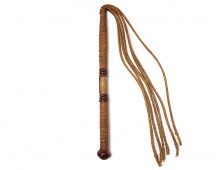Examining the American Attack on Québec
The American Revolution Institute is offering two online events about that invasion this week, two hundred fifty years later.
Tuesday, 9 December, 6:30 to 7:30 P.M.
The Battle for the Fourteenth Colony
Mark R. Anderson
Anderson examines the American colonies’ efforts to bring Quebec into the Continental confederation and free Canadians from British “tyranny.” He offers new insight into the key political and military factors that ultimately doomed America’s first foreign war of liberation and resulted in the Continental Army’s decisive expulsion from Canada on the eve of the Declaration of Independence.
Mark R. Anderson is a retired U.S. Air Force officer, having earned his M.A. in military studies from American Military University, with a concentration in early American land warfare. He is the author of several books, including The Battle for the Fourteenth Colony: America’s War of Liberation in Canada, 1774–1776 (2013), The Invasion of Canada by the Americans, 1775–1776: As Told through Jean-Baptiste Badeaux’s Three Rivers Journal and New York Captain William Goforth’s Letters (2017), and Down the Warpath to the Cedars: Indians’ First Battles in the Revolution (2022).
Anderson will be speaking at the American Revolution Institute in Washington, D.C. Register for the livestream of his talk through this webpage.
Friday, 12 December, 12:30 to 1 P.M.
The Revolution’s First Winter: Loyalist Thomas Ainslie’s Account of the 1775 American Assault of Quebec
Thomas Lannon
With unrest spreading in the southern colonies, British leaders worried rebellion might cross into Canada. That fear was justified, and Canada figured prominently in the American strategy for an opening campaign in the Revolution. Congress authorized the invasion in 1775, with the expectation that French Canadians would embrace union with the colonies.
At the center of this Lunch Bite presentation is a letter authored by Quebec’s Collector of Customs, Thomas Ainslie, preserved in the institute’s collections. Ainslie’s recollections provide a reliable day-to-day record from inside Quebec City during the American siege until British reinforcements arrived. The presentation will also explore the crucial role Loyalists played in defending the city, the uncertain loyalties of French Canadians, and the constant British fear that revolutionary fervor might spill over the border.
Lannon is the institute’s library director. Sign up to hear his virtual presentation here.














